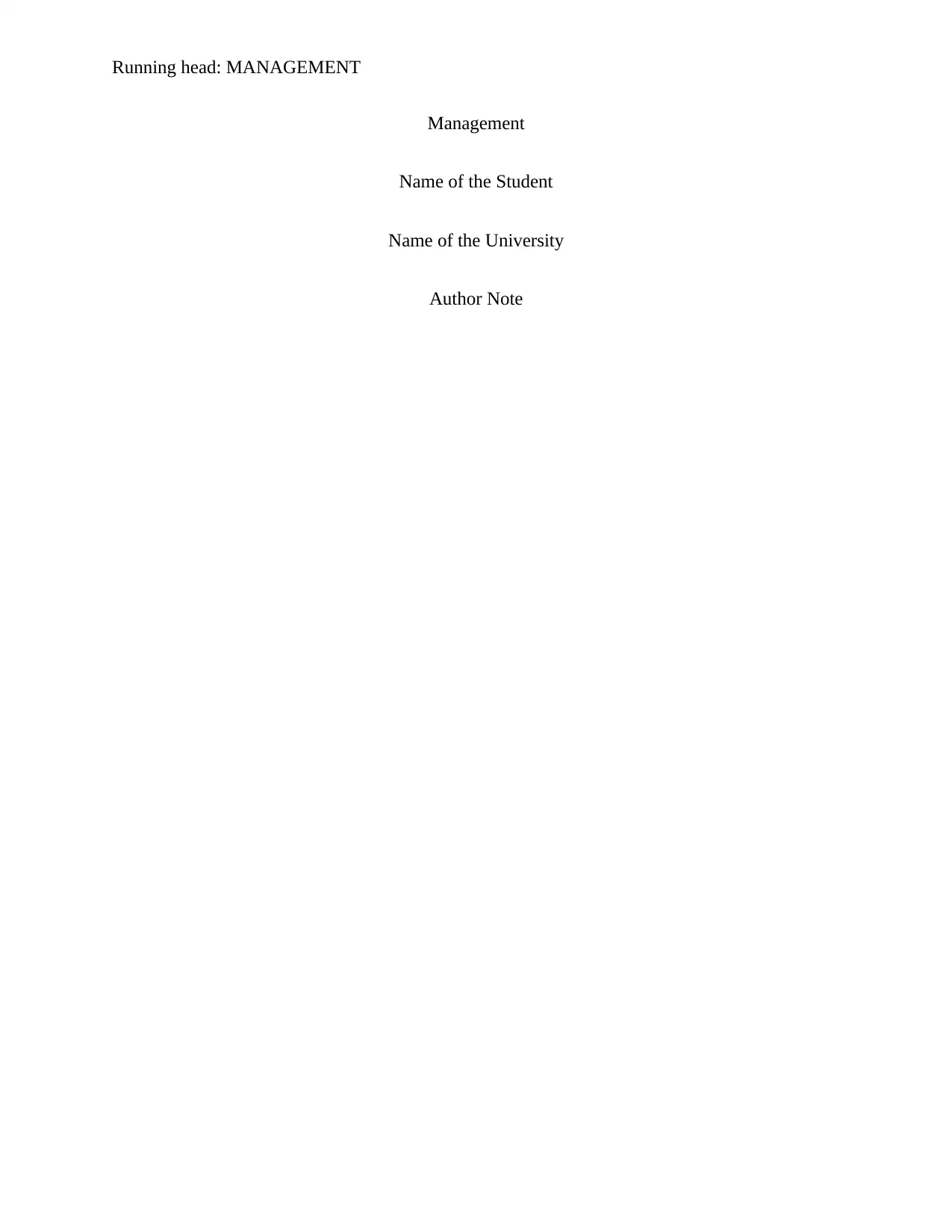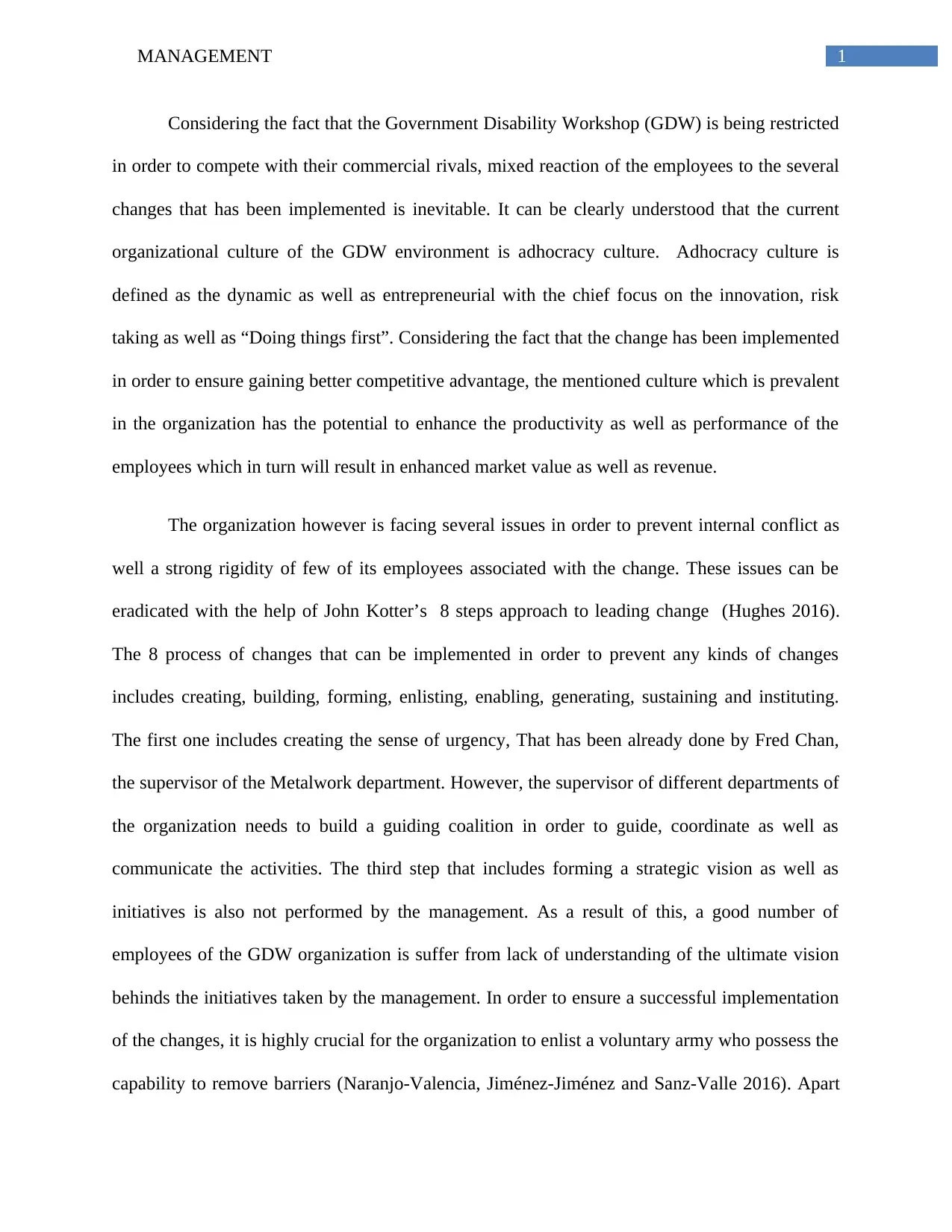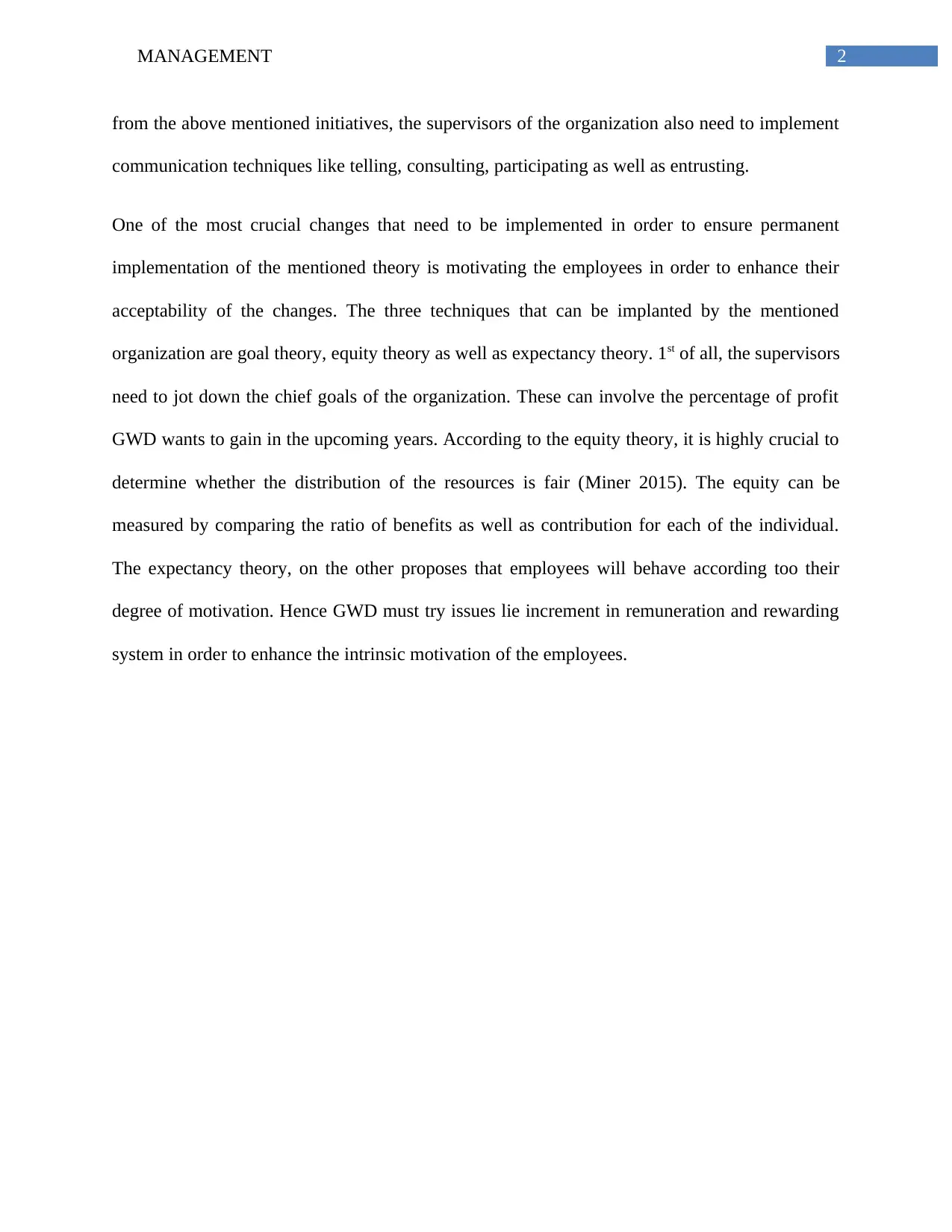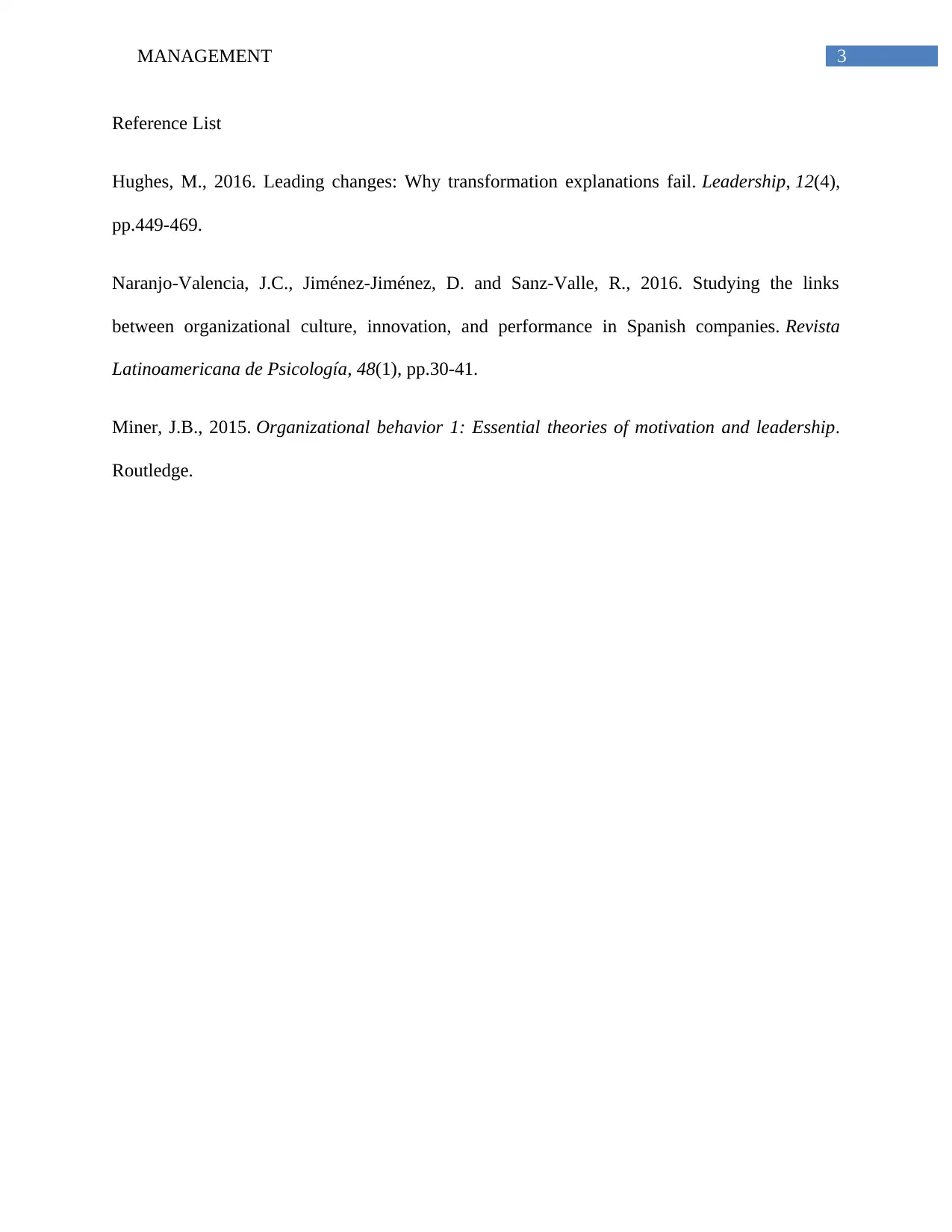MGMT 861: Navigating Organizational Change at Government Disability
VerifiedAdded on 2023/04/21
|4
|691
|490
Case Study
AI Summary
This case study analyzes the challenges faced by the Government Disability Workshop (GDW) in implementing organizational changes to compete with commercial rivals. The GDW's existing adhocracy culture, while beneficial for innovation, encounters resistance from employees. The solution applies John Kotter's 8-step change model, emphasizing the need for building a guiding coalition, forming a strategic vision, and enlisting a voluntary army to overcome barriers. Effective communication techniques and motivational strategies, including goal theory, equity theory, and expectancy theory, are proposed to enhance employee acceptance and ensure the successful and permanent implementation of these changes. Desklib is a platform where students can find similar solved assignments and study resources.
1 out of 4











![[object Object]](/_next/static/media/star-bottom.7253800d.svg)